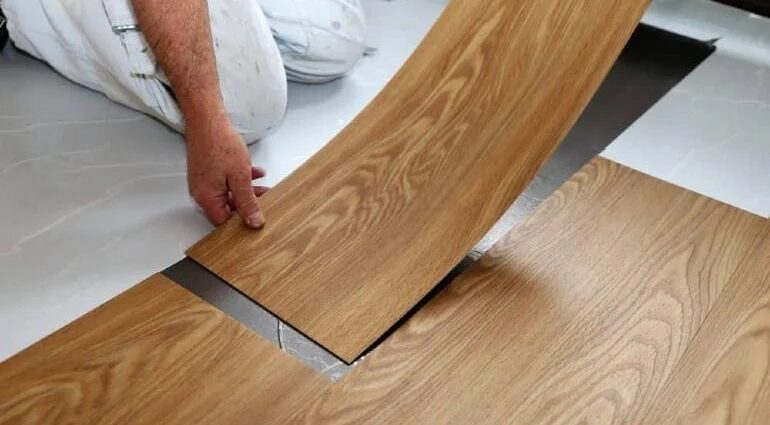Vinyl flooring offers versatility and durability in both roll and tile formats, but choosing between these two can often be a challenge. This article provides a detailed comparison of vinyl flooring rolls and tiles, highlighting their respective advantages and disadvantages to help you make an informed decision for your home.
Key Differences Between Vinyl Rolls and Tiles
Composition and Installation
- Vinyl Rolls: Typically available in widths of 6 to 12 feet, vinyl rolls require cutting to fit the room’s dimensions. They offer a relatively seamless finish and are often chosen for large, open areas.
- Vinyl Tiles: These are individual squares of vinyl, usually 12×12 or 18×18 inches, that fit together. They are easier to handle and install in complex layouts or smaller spaces.
Pros and Cons of Vinyl Rolls
Pros
- Seamless Appearance: Fewer seams mean less risk of moisture seeping between gaps, which is particularly advantageous in bathrooms and kitchens.
- Cost-Effective: Generally, vinyl rolls are less expensive per square foot compared to tiles.
- Quick Installation: Larger sheets mean faster coverage, which can be beneficial in expansive areas.
Cons
- Difficult to Replace: Damage to a section might require replacing a substantial part of the flooring.
- Handling Challenges: Large rolls can be cumbersome to transport and manoeuvre, especially in tight spaces.
Vinyl Tiles
Pros
- Ease of Replacement: Damaged tiles can be easily removed and replaced without affecting the entire floor.
- Design Flexibility: Mixing and matching different tile designs can create unique patterns and layouts.
- DIY Friendly: Tiles are generally easier to install and handle than large rolls, making them ideal for DIY projects.
Cons
- Visible Seams: Tiles can have visible seams that may collect dirt or moisture if not properly sealed.
- Potential for Edge Lifting: Improper installation or environmental factors can cause tiles to lift at the edges over time.
Considerations for Choosing Between Vinyl Rolls and Tiles
Room Layout and Size
- Small Rooms: Tiles may be more practical in smaller or awkwardly shaped rooms where cutting large rolls could lead to more waste.
- Large Areas: Rolls could be more efficient and aesthetically pleasing in larger, open areas due to their seamless appearance.
Traffic and Usage
- High Traffic: Tiles might be better in high-traffic areas as they can be replaced individually if worn out or damaged.
- Moisture Exposure: Rolls are preferable in areas with high moisture exposure as they offer fewer seams, reducing the risk of water damage.
Installation Tips
- Proper Subfloor Preparation: Ensure the subfloor is clean, dry, and level for both rolls and tiles to prevent imperfections.
- Professional Advice: Consulting with a flooring specialist can provide insights specific to your home’s conditions and usage.
Both vinyl flooring rolls and tiles offer unique benefits and challenges. Assessing your specific needs such as the room’s function, traffic levels, and desired aesthetic can guide you to the better choice for your flooring project. Whichever you choose, both forms of vinyl flooring provide durability, ease of maintenance, and a wide range of style options, making them excellent choices for modern homes.

